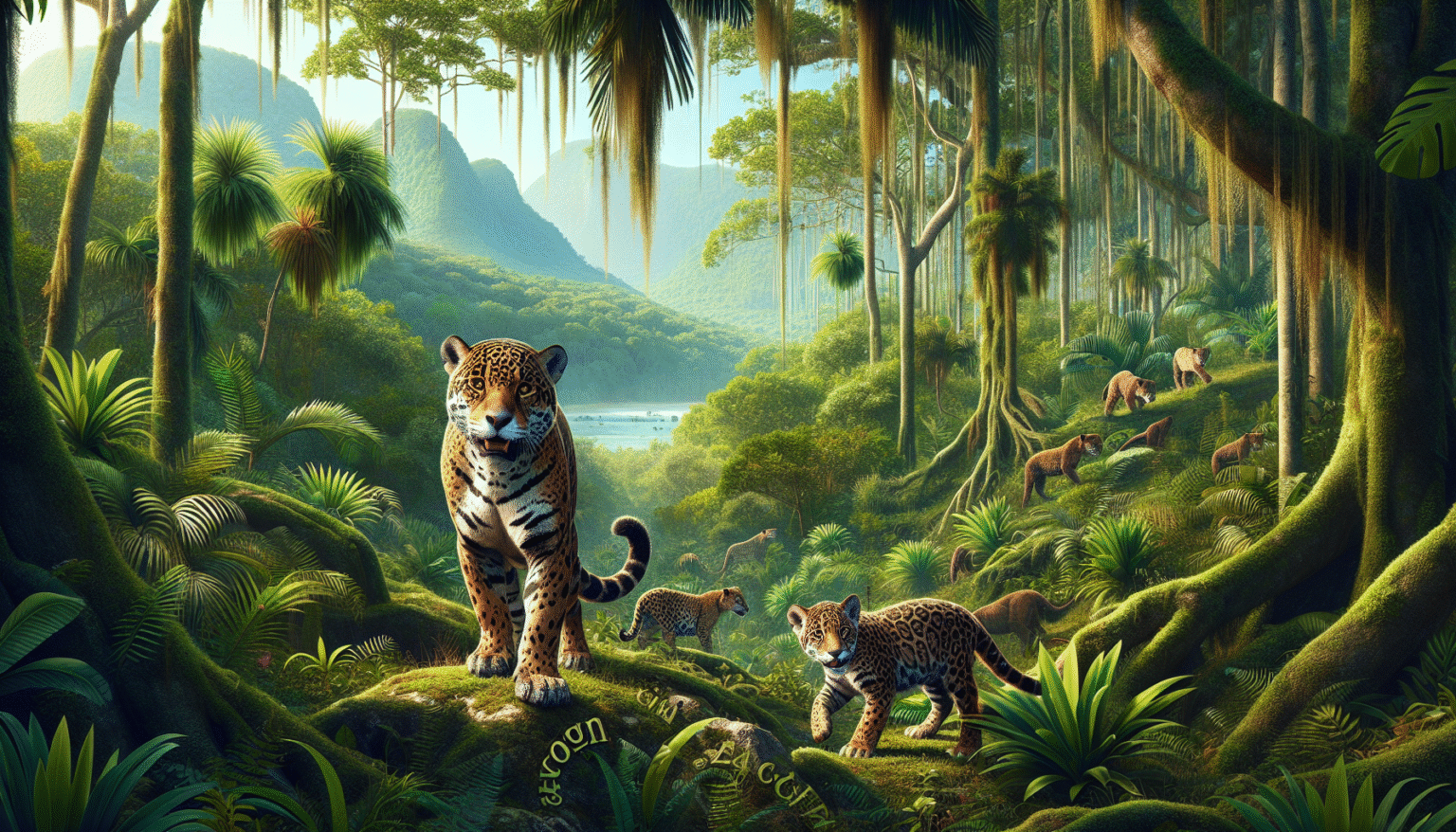Rescue Tales: Orphaned Jaguars of Tulum
The lush jungles of Tulum, Mexico, serve as a backdrop for the majestic jaguar, one of the planet’s most elusive and powerful predators. Unfortunately, this landscape, once a sanctuary for these big cats, has seen increasing threats due to habitat loss and poaching, endangering their survival. Among the shadows of these stunning trees lie stories of hope, sorrow, and redemption, encapsulated in the plight of orphaned jaguars.
The Jaguars of Tulum: A Cultural and Ecological Symbol
Jaguars (Panthera onca) are not only vital to the balance of the ecosystems in Tulum but are also revered as cultural icons by the ancient Maya civilization. As apex predators, they play a crucial role in maintaining healthy population numbers of other species, thus ensuring ecosystem stability. Their stealth and power have turned them into symbols of strength in local mythology.
Sadly, deforestation for agriculture, tourism, and urban development has led to a dramatic decline in their population in Tulum and throughout Mexico. Coupled with illegal hunting, these threats have resulted in orphaned jaguars, further complicating the situation for this already endangered species.
The Orphaned Jaguars: Cases from Tulum
Several cases highlight the challenges faced by orphaned jaguars in Tulum. When mother jaguars are killed by poachers or become victims of car collisions, the innocent cubs are left alone to navigate a perilous world. These cubs face starvation, increased vulnerability to predators, and the risk of captivity by poachers who aim to smuggle them for wildlife trade.
For example, a recently rescued jaguar cub named Luna made headlines when she was found orphaned after her mother was tragically shot. At merely six months old, Luna represented the plight of many cubs who require maternal care for survival. The efforts taken to rehabilitate her involve both healthcare and preparation for potential reintroduction into the wild.
Rescue and Rehabilitation Efforts: Key Organizations
A variety of organizations dedicate their resources to the rescue and rehabilitation of orphaned jaguars in Tulum. One notable example is the Jaguars of Tulum Foundation, committed to ensuring the survival of this species through effective conservation strategies. Their approach includes:
-
Immediate Rescue Operations: When a jaguar is discovered in distress or orphaned, the foundation mobilizes experts to assess the situation swiftly. This includes tranquilizing the animal if necessary to ensure safe trapping.
-
Veterinary Care: Medical attention is crucial for these rescues, particularly for orphaned cubs who may suffer from malnutrition, parasites, or injuries. Veterinarians specializing in wildlife treatment provide vaccinations, health screenings, and specialized diets tailored to each jaguar’s needs.
-
Rehabilitation: The rehabilitation process involves psychological and physical preparation for a return to the wild. Experts focus on teaching essential survival skills, including hunting and foraging, in a safe and controlled environment designed to mimic their natural habitat.
- Community Engagement: Local communities are integral to conservation efforts. Awareness campaigns educate residents on the importance of preserving jaguars and their habitats, leading to increased community-based conservation initiatives.
The Ongoing Challenges of Rehabilitation
While the efforts of rescue organizations are commendable, challenges abound. One key issue is the availability of suitable habitat for reintroduced jaguars. Continuous deforestation and habitat fragmentation make it difficult to find large areas where these big cats can thrive post-rehabilitation.
Furthermore, wildlife trafficking remains a constant concern. Even after rehabilitation, reintroduced jaguars may encounter poachers or illegal hunting traps. Organizations are working tirelessly to devise strategies to combat these threats, often collaborating with local law enforcement to protect these vulnerable creatures.
Conservation Beyond Rehabilitation: Long-Term Solutions
Addressing the issue of orphaned jaguars calls for a multifaceted approach. Beyond direct rescue operations, long-term conservation solutions are critical. This includes:
-
Preserving Natural Habitats: Initiatives aimed at the restoration of degraded environments can significantly enhance the chances of survival for both orphaned and wild jaguars. Parks and protected areas must be efficiently managed to promote biodiversity.
-
Sustainable Tourism: Encouraging eco-tourism in Tulum not only provides economic benefits to local communities but also fosters appreciation for wildlife preservation. Tourists can engage in activities that support conservation while enjoying the natural beauty of the region.
-
Research and Monitoring: Continuous research into jaguar populations and their behaviors can help fine-tune conservation strategies. Tagging and tracking rehabilitated jaguars contributes valuable data on their adaptation to the wild.
- Legislation and Policy Advocacy: Advocating for stronger wildlife protection laws can aid in addressing the illegal wildlife trade and habitat destruction. Collaboration with government agencies is essential to enforce these laws effectively.
Community Stories: The Impact of Human Connection
Personal stories emerging from Tulum illustrate the impact of community involvement in wildlife conservation. Residents who once viewed jaguars as threats to their livestock have shifted their perspective, recognizing their role in maintaining the ecosystem’s health.
A narrative about a family whose farm facilities were damaged by jaguar sightings transformed their fear into a project of coexistence. They joined forces with conservationists to create “Jaguar-Friendly” farming techniques, helping ensure their livelihood while respecting the creatures of the jungle.
Educational Outreach: Igniting Passion in Future Generations
Education plays a pivotal role in ensuring the continued interest in jaguar conservation. Organizations host workshops in local schools to engage children in understanding the importance of jaguars and the need to protect their environment. Through interactive programs, children learn about the ecological balance and the unique biology of jaguars.
The hope is to inspire a new generation of conservationists who will continue the fight to protect these magnificent creatures, ensuring that stories of orphaned jaguars evolve into tales of survival and strength.
Conclusion
The orphaned jaguars of Tulum underscore the intersection of human actions and wildlife conservation. With continued efforts in rehabilitation, community education, and sustainable practices, the legacy of these majestic cats hangs in the balance, reliant on the collective dedication of individuals and organizations alike. The captivating stories of resilience from Tulum echo a universal truth: the fight for wildlife conservation is as vital as it is compelling.







